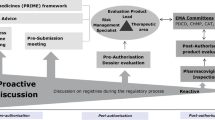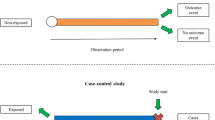Abstract
The National Institutes of Health has proposed a roadmap for clinical research. Test projects of this roadmap include centralized data management for distributed research, the harmonization of clinical and research data, and the use of data standards throughout the research process. In 2003, RxNorm was named as a standard for codifying clinical drugs. Clinical researchers looking to implement RxNorm have few template implementation plans. Epidemiological studies and clinical trials (types of clinical research) have different requirements for model standards and best implementation tools. This paper highlights two different (epidemiological and intervention) clinical research projects, their unique requirements for a medication standard, the suitability of RxNorm as a standard for each, and application and process requirements for implementation. It is hoped that our experience of selecting and implementing the RxNorm standard to address varying study requirements in both domestic and international settings will be of value to other efforts.

Similar content being viewed by others
References
NIH, NIH Roadmap. Accelerating Medical Discovery to Improve Health, National Institutes of Health 2005. http://nihroadmap.nih.gov/
Rindfleisch, T. C., and Brutlag, B. L., Directions for clinical research and genomic research into the next decade. implications for informatics. J. Am. Med. Assoc. 5:404–411, 1998.
Zerhouni, E. A., Keynote presentation. In: American Medical Informatics Association Annual Symposium. 2005. Washington, D.C.
Richesson, R. L., and Krischer, J. P., Data Standards in clinical research: Gaps, overlaps, challenges and future directions. J. Am. Med. Inform. Assoc. 14(6):687–696, 2007.
CHI, CHI Executive Summaries, Consolidated Health Informatics 2004. http://www.whitehouse.gov/omb/egov/documents/CHIExecSummaries.doc
NIH, Final NIH Statement on Sharing Research Data, February 26, 2003, National Institutes of Health 2003. http://grants.nih.gov/grants/guide/notice-files/NOT-OD-03-032.html
NLM, RxNorm, 2005. http://www.nlm.nih.gov/research/umls/rxnorm/index.html
Liu, S., et al., RxNorm: Prescription for Electronic Drug Information Exchange. IEEE, IT Pro, 2005. September–October 2005: p. 17–23.
Bouhaddou, O., et al., Exchange of computable patient data between the Department of Veterans Affairs (VA) and the Department of Defense (DoD): Terminology mediation strategy. J. Am. Med. Inform. Assoc. 15(2):174–183, 2008.
PEC, TEDDY Project Website, Pediatrics Epidemiology Center 2006. http://teddy.epi.usf.edu/
Hagopian, W. A., et al., TEDDY—The Environmental Determinants of Diabetes in the Young—An Observational Clinical Trial. Annals of the New York Academy of Science, 2006. Immunology of Diabetes IV: Progression in Understanding (1079):320–326.
NIH, Press Release. NIH Establishes Rare Diseases Clinical Research Network, NCRR, Editor. 2003.
Hampton, T., Rare disease research gets boost. JAMA. 295:2836–2838, 2006.
Levin, M. A., et al., Extraction and mapping of drug names from free text to a standardized nomenclature. AMIA Annu Symp Proc, 438–442, 2007.
Cimino, J. J., Desiderata for controlled medical vocabularies in the twenty-first century. Methods Inf. Med. 37(4–5):394–403, 1998.
Tuttle, M. S., et al., The Semantic Web as “Perfection Seeking: A View From Drug Terminology”. 2001.
NLM, RxNav. A Semantic Navigation Tool for Clinical Drugs, National Library of Medicine 2005. http://mor.nlm.nih.gov/download/rxnav/
Tuttle, M. S., et al., Navigating to knowledge. Methods Inf. Med. 34:214–231, 1995.
Richesson, R. L., et al. Paper: A Web-based SNOMED CT Browser: Distributed and Real-time Use of SNOMED CT During the Clinical Research Process in Medinfo 2007 Congress. 2007. Brisbane.
Campbell, J. R., et al., Phase II evaluation of clinical coding schemes: Completeness, taxonomy, mapping, definitions, and clarity. CPRI Work Group on Codes and Structures. J. Am. Med. Inform. Assoc. 4(3):238–251, 1997.
Bakken, S., et al., An evaluation of ICNP intervention axes as terminology model components. Proc. AMIA. Symp. 42–46, 2000.
Penz, J. F., et al., Evaluation of SNOMED coverage of Veterans Health Administration terms. Stud. Health Technol. Inform. 11(Pt 1):540–544, 2004.
Elkin, P. L., et al., Evaluation of the content coverage of SNOMED CT: Ability of SNOMED clinical terms to represent clinical problem lists. Mayo Clin. Proc. 81(6):741–748, 2006.
Warren, J. J., and Wilson, R. P., Representing Cardiovascular Concepts in an Electronic Health Record Using SNOMED CT®. in American Medical Informatics Association Annual Symposium. 2006. Washington, D.C.
Richesson, R. L., Fung, K. W., and Krischer, J. P., Heterogeneous but “standard” coding systems for adverse events: Issues in achieving interoperability between apples and oranges. Contemp. Clin. Trials. 29(5):635–645, 2008.
Richesson, R. L., Andrews, J. E., and Krischer, J. P., Use of SNOMED CT to represent clinical research data: A semantic characterization of data items on case report forms in vasculitis. J. Am. Med. Inform. Assoc. 13:536–546, 2006.
Acknowledgements
The authors wish to thank Cristina McCarthy, Wendy McCleod, Lori Ballard, and Kim Hunt for their contributions. The authors also wish to thank Dr. Stuart Nelson of the NLM for his support. This research is funded by the National Institutes of Health DK63790 and RR019259, the National Center for Research Resources (NCRR). Its contents are solely the responsibility of the authors and do not necessarily represent the official views of NCRR or NIH. We also thank the NIH Office of Rare Diseases for its support of the RDCRN. The terminology server hosted by Apelon, Inc. (http://www.apelon.com). The TEDDY study is funded by DK 63829, 63861, 63821, 63865, 63863, 63836 and 63790 and Contract No. HHSN267200700014C from the National Institute of Diabetes and Digestive and Kidney Diseases (NIDDK), National Institute of Allergy and Infectious Diseases (NIAID), National Institute of Child Health and Human Development (NICHD), National Institute of Environmental Health Sciences (NIEHS), Juvenile Diabetes Research Foundation (JDRF), and Centers for Disease Control and Prevention (CDC). We also thank Ken Young and Heather Guillette for technical support of RxNorm browsers.
Author information
Authors and Affiliations
Corresponding author
Rights and permissions
About this article
Cite this article
Richesson, R.L., Smith, S.B., Malloy, J. et al. Achieving Standardized Medication Data in Clinical Research Studies: Two Approaches and Applications for Implementing RxNorm. J Med Syst 34, 651–657 (2010). https://doi.org/10.1007/s10916-009-9278-5
Received:
Accepted:
Published:
Issue Date:
DOI: https://doi.org/10.1007/s10916-009-9278-5




